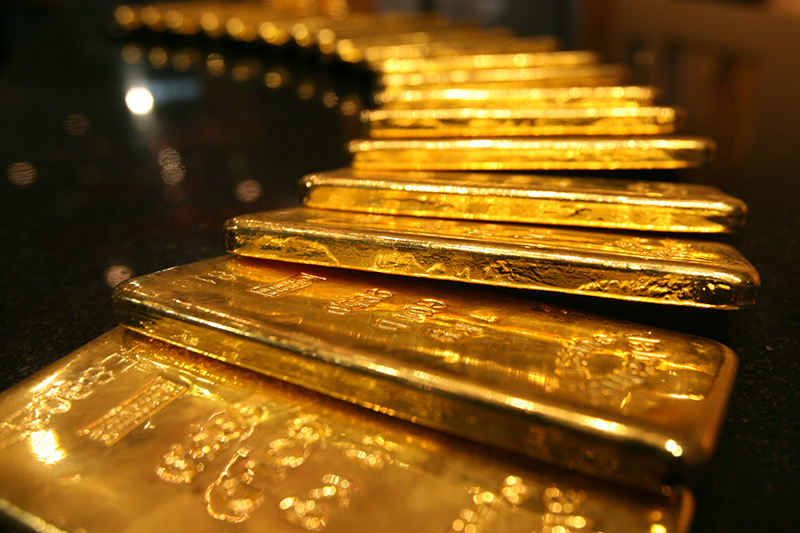ING explains why rally in gold prices 'isn’t over just yet'
Investing.com -- The rally in gold prices “isn’t over just yet,” according to ING.
The precious metal has enjoyed a record-breaking rally in 2024, surging 25% year-to-date driven by a combination of Federal Reserve rate cuts, increased central bank purchases, and robust safe-haven demand amid geopolitical and economic uncertainties.
Analysts at ING expect these factors to sustain upward momentum in 2025, pushing gold prices to new highs.
The Federal Reserve’s easing cycle has been pivotal in supporting gold’s rally. In September, the Fed implemented its first rate cut since 2020, reducing rates by 50 basis points, followed by an additional 25 basis points in November. These actions brought the federal funds target range to 4.5%-4.75%.
“Lower borrowing costs are positive for gold as the metal doesn’t pay interest,” ING explains. The Fed had held rates in the 5.25%-5.5% range—the highest in over two decades.
Looking ahead, ING believes the market's focus will be on the pace of further monetary easing under President Donald Trump’s administration.
Inflationary pressures stemming from Trump’s proposed policies, including tariffs and stricter immigration controls, could limit the Fed’s rate cuts. ING’s U.S. economist, James Knightley, anticipates a further 25 basis point cut in December, but the trajectory beyond that remains uncertain, with a potential pause at January’s Federal Open Market Committee meeting.
Central bank gold buying has also bolstered demand for the bullion, although the pace of purchases slowed in the third quarter due to high prices.
Poland's central bank was the top buyer, adding 42 tonnes to its reserves, which now total 420 tonnes or 16% of its holdings. Governor Adam Glapiński reiterated the bank's aim to increase gold's share of currency reserves to 20%.
The Reserve Bank of India (NS:BOI ) maintained its buying streak, adding to reserves each month during the quarter. Meanwhile, the People’s Bank of China did not increase its gold holdings for the sixth consecutive month in October.
“Looking ahead into next year, we expect central banks to remain buyers due to geopolitical tensions and the economic climate,” ING noted.
A survey conducted by the World Gold Council in April 2024 revealed that 29% of central bank respondents plan to increase their gold reserves within the next 12 months, citing geopolitical tensions and economic challenges as driving factors
Global gold exchange-traded funds (ETFs), meanwhile, have seen inflows for six consecutive months, supported by North American and Asian demand.
Investor holdings in gold ETFs typically rise alongside spot gold prices, but much of 2024 saw a divergence as prices hit record highs while ETFs experienced outflows. This trend reversed in May, with sustained inflows until a decline in November following the U.S. election. Analysts anticipate ETF inflows to pick up again in 2025 as rate cuts continue.
Overall, ING analysts believe gold’s positive momentum will continue in the short to medium term.
"The macro backdrop will likely remain favorable for the precious metal as interest rates decline and foreign-reserve diversification continues amid geopolitical tensions, creating a perfect storm for gold," they wrote.
In the long term, Trump’s inflationary policies, such as tariffs and stricter immigration controls, may constrain further Federal Reserve rate cuts. While a stronger U.S. dollar and tighter monetary policy could weigh on gold, heightened trade tensions may enhance its safe-haven appeal.
ING forecasts gold prices to average $2,760 per ounce in 2025.
Source: Investing.com
